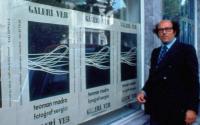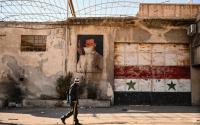The Iraq Museum in Baghdad was one of the three or four most important archeological museums in the world, a treasure house of objects included in every standard art history text book, housing the earliest narrative reliefs and the oldest written works in world history. As has now been well documented, by April 12 the entire museum had been looted. The looters used professional glass-cutting tools, cranes and trucks over a period of forty-eight hours, as a US tank stood idly outside. At one point a few soldiers strolled into the museum, watched for a while and then left.
The looting of this unparalleled museum was not an isolated incident or a casualty of the chaos of war. Before this raid, a group of looters emptied museums in Basra and Mosul while coalition troops looked on. Even after the museum lootings had sparked an international outcry, Iraq's libraries and galleries were allowed to be plundered and burnt.
US troops not only neglected to protect historical sites and cultural property; they abused such sites themselves. US forces bombed Baghdad's thirteenth-century University building, one of the oldest universities in the world. US troops transformed the ancient site of Ur into a military base, even digging trenches into the ground. US tanks rolled through the ancient streets of Babylon, an act that had no military value but to declare conquest.
The destruction of cultural heritage during war can fall into the category of collateral damage, but looting that takes place under the supervision of an occupying force is another matter. The 1954 Hague Convention establishes that it is the responsibility of the occupying power to protect the cultural patrimony of the occupied land. While the United States never ratified that convention, the Defense Department promised to abide by the Hague Convention in several responses to the scholarly community. A March 18 letter to this effect to the Society for American Archaeology is posted at www.saa.org. In any case, the United States is a signatory to the Geneva Convention, which makes clear that the protection of museums, as of hospitals, is the responsibility of the occupying force. The United States clearly violated this convention. While the Oil Ministry was, and remains, well guarded, at the time of an emergency meeting about the looting, on April 17 at UNESCO in Paris, no military guard had yet been posted at the museum. The museum's director of research, Donny George, who had been asked to attend the UNESCO meeting, declined the invitation, explaining that he had to stay in Baghdad to guard what was left of the collections.
Blame must be placed with the Bush Administration for a catastrophic destruction of culture unparalleled in modern history. Thousands of cuneiform tablets and ancient Christian, Muslim and Jewish manuscripts are gone. Most of the country's works of art have disappeared. Much of the nation's cultural heritage has been lost. Donald Rumsfeld's response to this devastation? "Freedom's untidy. And free people are free to make mistakes and commit crimes."
And who stands to benefit from this plunder? The illicit trade in antiquities, which funnels works from countries such as Egypt, Greece and Italy to collectors based in New York, London and Geneva. Collector William Pearlstein, of the American Council for Cultural Policy (ACCP), an organization that met with the White House and the Pentagon right before the war and right after the looting, is appealing for the cultural theft to continue by other means, calling Iraq's antiquities-preservation laws "retentionist," and saying he "hoped that Iraq would grant more excavation permits and consider export permits for redundant objects." Everyone from professional organizations to religious fanatics is now laying claim to Iraq's past, some pretending to speak for the Iraq Museum or the Department of Antiquities. This opportunism opens the door to more cultural and historical plunder, a base scramble much like the parceling off of sites and antiquities that occurred in the nineteenth century.
At this point, the US authority in Iraq has yet to allow an international team of experts to assess damage to archeological sites, monuments and museums. By the time help can go in, some structures--such as the 2,000-year-old Great Arch of Ctesiphon, which has suffered for years due to the banning of monument-preservation materials under the embargo--may very well collapse. Perhaps private interests such as the ACCP will be allowed in first. All of these decisions have been designated a US project. US archeologists, art historians and historians must take a stance against this. They must insist on the international cooperation of world academics, with involvement based on expertise. Decisions about excavation permits and the organization of cultural property should not depend upon the whims of the occupying force. Ultimately, such decisions must be left to the Iraqi Department of Antiquities and Heritage, as only Iraqis can have the right to decide how to proceed.
Even in antiquity, and by the Babylonians and Assyrians themselves, the destruction of cultural property was understood as an act of psychological warfare. Historical annals from ancient Mesopotamia describe how the identity and power of a people is directly linked to its cultural monuments. Recent empires--the Habsburgs, the British and the French--all appropriated the cultural heritage of colonized lands, but at least they safeguarded it in museums and promoted its study. The destruction that the US military has allowed to occur in Iraq has no parallel.






